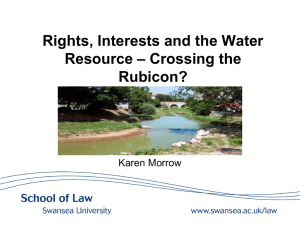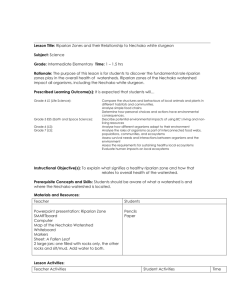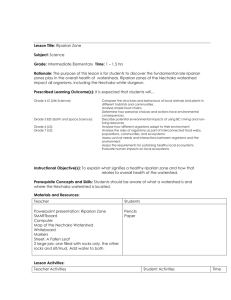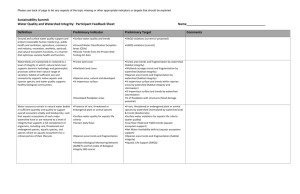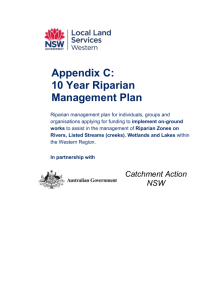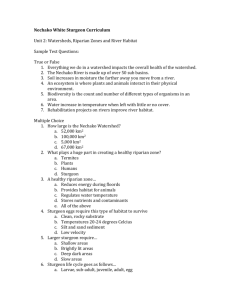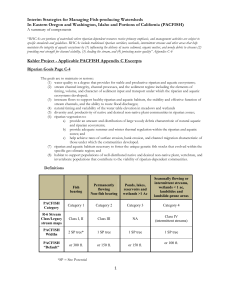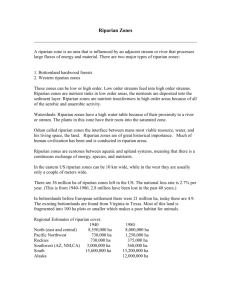16.-Habitat-Lessons-Riparian-Zone
advertisement
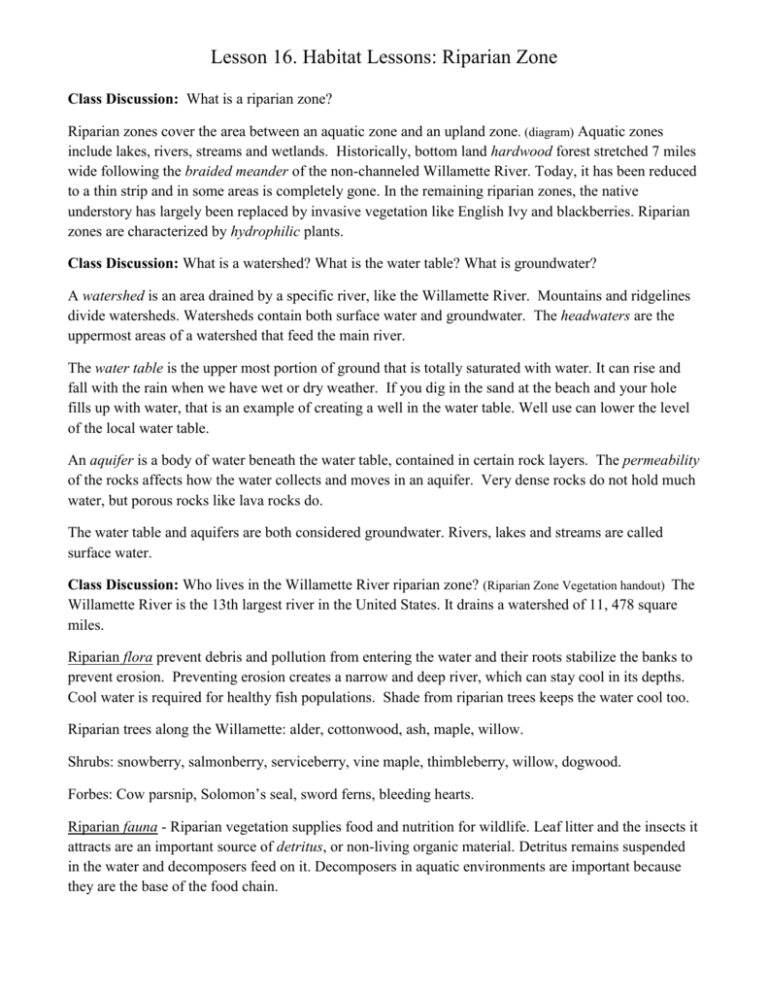
Lesson 16. Habitat Lessons: Riparian Zone Class Discussion: What is a riparian zone? Riparian zones cover the area between an aquatic zone and an upland zone. (diagram) Aquatic zones include lakes, rivers, streams and wetlands. Historically, bottom land hardwood forest stretched 7 miles wide following the braided meander of the non-channeled Willamette River. Today, it has been reduced to a thin strip and in some areas is completely gone. In the remaining riparian zones, the native understory has largely been replaced by invasive vegetation like English Ivy and blackberries. Riparian zones are characterized by hydrophilic plants. Class Discussion: What is a watershed? What is the water table? What is groundwater? A watershed is an area drained by a specific river, like the Willamette River. Mountains and ridgelines divide watersheds. Watersheds contain both surface water and groundwater. The headwaters are the uppermost areas of a watershed that feed the main river. The water table is the upper most portion of ground that is totally saturated with water. It can rise and fall with the rain when we have wet or dry weather. If you dig in the sand at the beach and your hole fills up with water, that is an example of creating a well in the water table. Well use can lower the level of the local water table. An aquifer is a body of water beneath the water table, contained in certain rock layers. The permeability of the rocks affects how the water collects and moves in an aquifer. Very dense rocks do not hold much water, but porous rocks like lava rocks do. The water table and aquifers are both considered groundwater. Rivers, lakes and streams are called surface water. Class Discussion: Who lives in the Willamette River riparian zone? (Riparian Zone Vegetation handout) The Willamette River is the 13th largest river in the United States. It drains a watershed of 11, 478 square miles. Riparian flora prevent debris and pollution from entering the water and their roots stabilize the banks to prevent erosion. Preventing erosion creates a narrow and deep river, which can stay cool in its depths. Cool water is required for healthy fish populations. Shade from riparian trees keeps the water cool too. Riparian trees along the Willamette: alder, cottonwood, ash, maple, willow. Shrubs: snowberry, salmonberry, serviceberry, vine maple, thimbleberry, willow, dogwood. Forbes: Cow parsnip, Solomon’s seal, sword ferns, bleeding hearts. Riparian fauna - Riparian vegetation supplies food and nutrition for wildlife. Leaf litter and the insects it attracts are an important source of detritus, or non-living organic material. Detritus remains suspended in the water and decomposers feed on it. Decomposers in aquatic environments are important because they are the base of the food chain. Lesson 16. Habitat Lessons: Riparian Zone Fauna examples: black bears, deer, beavers, otters, frogs, dragonflies, ducks, great blue herons, osprey, ouzels, kingfishers and more! Questions: How are rivers, riparian zones, water tables and watersheds connected? Why are rivers important to both people and wildlife? How have people changed the river channel? How can humans impact the watershed? What might happen to a river if the headwaters are clear cut and there are no trees on the banks? Worksheet & Activity: Show on the overhead or draw on the board the diagram of Aquatic, Riparian, and Upland zones. Make copies and hand out the Riparian Zone Vegetation diagram or have kids draw along and label their own diagrams. Have students add appropriate fauna to the picture and label. Color if time allows. Vocab: Hardwoods are broadleaved trees, not conifers which are softwood. Braided meander –the many curving channels of a river as it travels over flat ground. Hydrophilic plants are adapted to survive in water covered areas. Watershed - an area that a river system drains. Water table – water suspended in the soil and rock just beneath the surface. Aquifer –deep water contained in porous rock layers. Flora - plants Fauna – animals and insects Detritus –non-living organic material




